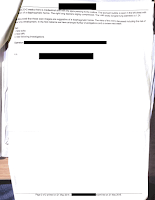Anomaly scan (continued)
Thursday 21st May 2015
21 weeks pregnant
21 weeks pregnant
15 minutes later, George Donnachie invited us back in. We had both expected to go back into the office in which we'd met previously, so we were both surprised to be shown into a scan room and for me to be pointed towards the bed. It was clear that Dr Donnachie wished to perform another scan. There were several other people in the room. I don't remember us being introduced to them; maybe we were, maybe we weren't.
I lay down and Dr Donnachie performed a long and detailed scan. Chris remembered to tell him that we didn't want to know the sex of the baby - although that felt quite irrelevant in one way, it also seemed important. The scan seemed to go on and on. George Donnachie called out measurements to his colleagues at a computer and pointed things out to them, but there was no real indication as to what was wrong (by then we assumed that something must be).
He then finished and sat us down and we asked what was wrong. He said, "I think your baby has a diaphragmatic hernia." Chris asked, "What is a diaphragmatic hernia?" and George explained to him that it was a hole in the diaphragm whereby the contents of the abdomen could migrate into the chest. Chris asked what the outcome was and I remember saying "death", although I knew there was a range of possible outcomes. George confirmed this and explained that survival rates depend on lung size: overall there was a 50% survival rate, and there was a possible option of fetal surgery at Kings College Hospital if we qualified. He said he would book us an MRI scan and an echo scan. The MRI would give us information about the diaphragmatic defect and the echo would confirm and exclude cardiac defects which commonly go along with diaphragmatic hernias. They would usually be able to arrange this for Monday (it was Thursday afternoon) but of course it was a Bank Holiday weekend, so they aimed for Tuesday morning.
The suspicious markers for diaphragmatic hernia on the scan (see report below) were the heart being shifted to the right with the apex pointed towards the midline ("shifted and rotated" was how it would be referred to), the stomach bubble in the left chest, and a small abdominal circumference.
George then offered us another brief scan to look at the lung-head ratio, which would give a better indication of survival for our baby. He gave us a 75% chance of survival for Rumer when looking at lung and head size, which was better than average. He also began to get more suspicious as to whether there was a diaphragmatic hernia at all: it seemed that on some planes, he could see the stomach bubble in the chest, and on others he couldn't. He showed this to several colleagues, including the cardiac specialist doctor we'd had in our anomaly scan just before. We asked how likely it was there was a diaphragmatic hernia and George said he'd "be delighted to be proved wrong", but he thought the MRI would confirm it.
We were then shown to the first of the many quiet rooms we would come to see by Claire Kennedy, George's junior doctor. We were surprised not to be as upset as you would imagine. We remember asking where we could find out more about diaphragmatic hernias (also known as Congenital Diaphragmatic Hernias, CDH) and Claire advising us only to look at NHS websites. Fortunately this was not advice we were to follow throughout the pregnancy, but we nodded at the time. Claire, George and their colleagues stayed in their room to sort out the MRI and echo referrals; it took them a long time and it was very late. Eventually we were asked to wait in the waiting room as FMU was closed for the night. It was nearly 7pm by the time we all left, but we did so with a promise of phone calls the following day to confirm the MRI and echo for Tuesday and another appointment the following week in FMU.
Scan report
|
|


No comments:
Post a Comment
Comments appear with some delay to allow moderation. Thanks for commenting!